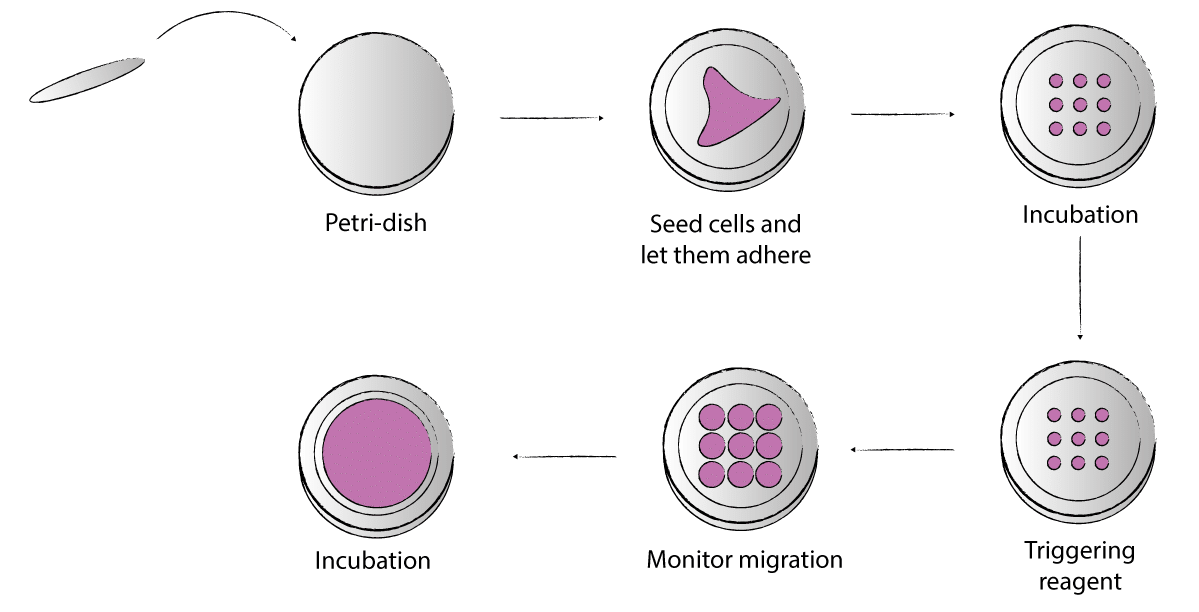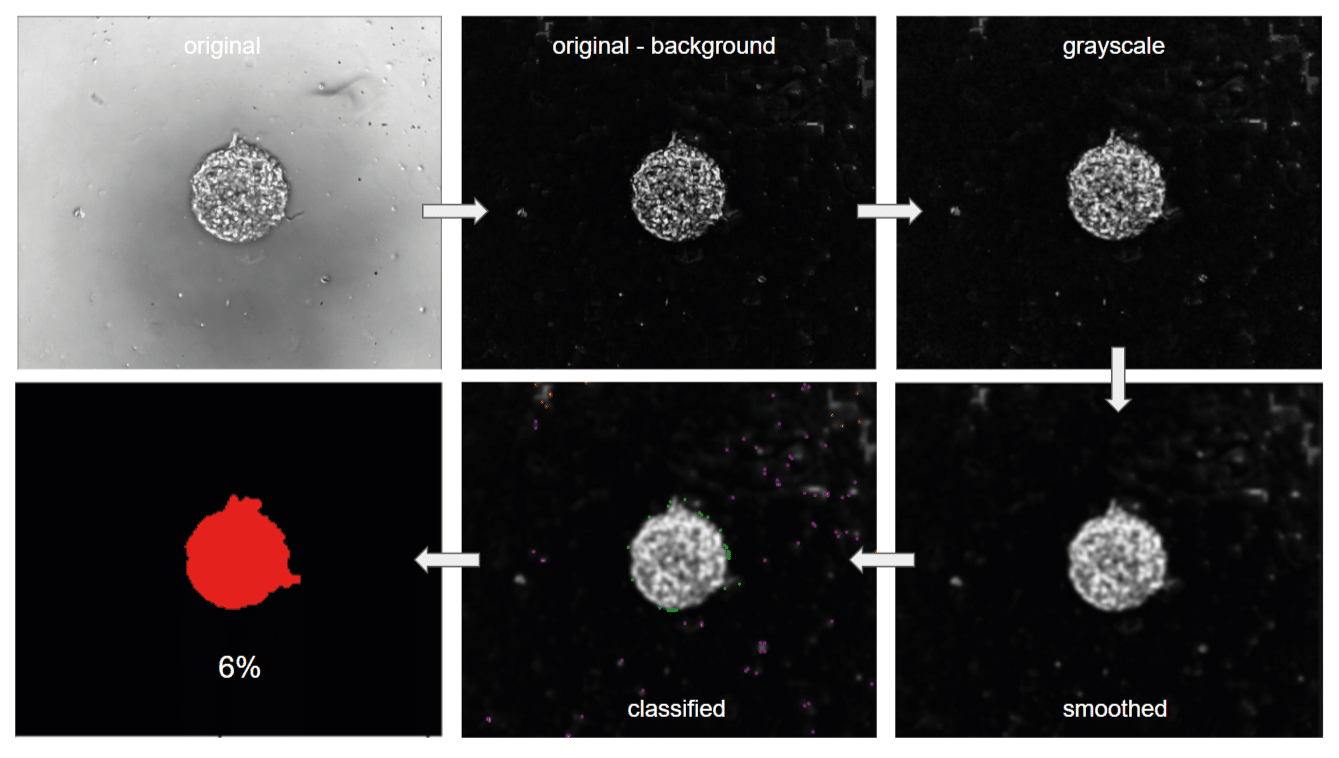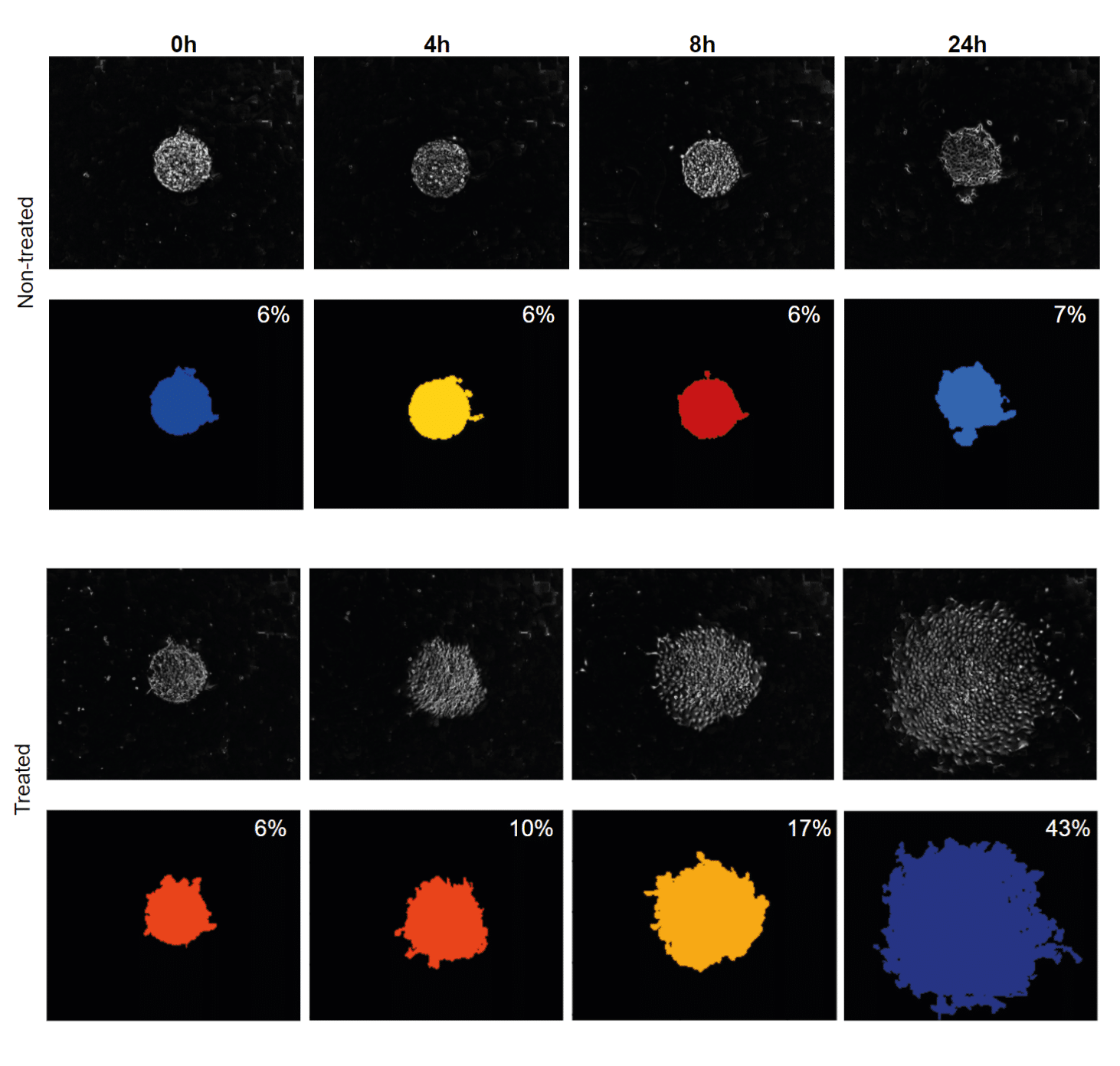Disk migration assay
How to measure migration from circular geometry using image analysis?
How to measure migration from circular geometry using image analysis?
Controlled cell migration, collective cell migration, area occupied by cells, image object detection, circular migration, cell polarity
Migration of a cell population is usually measured with the wound healing assay. However, it is only a large scale assay with a high number of cells in the population, making it difficult to analyse the behaviour of single cells and to distinguish cell migration from cell proliferation.
The substrate consists of an array of adhesive circular micropatterns of 500 um. The cells are confined to these circles and fill them as they proliferate. Once they are confluent in the circles, migration is triggered by rendering the outside of the circles newly adhesive. The circles of cells on the substrate can either be studied as single entities or as a whole—a single micropatterned substrate can thus be seen as a multiplexed migration assay containing a certain amount of smaller-scale cell populations. Depending on the radius of a circle, the number of individual circular populations of cells on the subs1trate will vary.
In the present application note, we describe how migration of a small population of cells, consisting of around 200 cells patterned inside a circle of 500 um diameter can be monitored in time using the 4DCELL dynamic micropatterns.
In this example, a circle migration assay was set-up on dynamic micropatterns. Mesenchymal stem cells were cultured on a 4DCELL 18 mm dynamic micropatterned glass coverslips, not coated with any ECM protein. The micropatterned coverslips consisted of an array of circular shapes of diameter 500 um coated with the anti-adhesive agent. 60’000 cells were seeded on the coverslip. After 24 hours of incubation, the cells were homogeneously patterned in the circles and absent in regions separating the circles. To release the cells from their patterns, the region surrounding the circles is rendered adhesive by adding a high dose (50 uM) of the triggering reagent.

Setting up the circle migration assay using a 4DCELL dynamic micropatterned coverslip
Cell migration from circular patterns can be quantified by measuring the area occupied by the spreading cells at different timepoints.
First, the background is subtracted from the image using the imageJ built-in ‘’rolling ball’’ algorithm. This allows to enhance the contrast between cells and background and to correct for uneven illumination.
Then, the image is converted to a grayscale image using the ‘ColorToGray’ CellProfiler module. The ‘Smooth’ module is then applied to the grayscale image to remove artifacts.
Next, the ‘IdentifyPrimaryObjects and ‘MeasureImageAreaOccupied’ modules are successively applied.
The first classifies features on the image into two classes: object and background, where the cells correspond to objects. The latter measures the area taken by the previously calculated object on the image.

Sequence of modules used in the CellProfiler pipeline for measuring the area occupied by cells on the image
In this example, the area occupied by the cells on the original image is 6%
Images of the substrate were acquired at three timepoints: immediately after triggering cell migration with the reagent, 4 hours, 8 hours and 24 hours after. A non-treated negative control is also provided.
The area occupied by cells was calculated using CellProfiler

Setting up the wound healing assay using a 4DCELL dynamic micropatterned coverslip.
This simple example illustrates how to the 4DCELL dynamic micropatterns can be used to monitor the migration of a small cell population from an initial circular pattern. On the treated sample, migration outside of the 500 um circle steadily increases.
After 24 hours, the cells have migrated to cover 43% of the frame.
At 4 and 8 hours, the spreading of the circle is mostly caused by migration, a process that has a shorter time-scale compared to cell proliferation.
After some time, the combination of both proliferation and migration amplify spreading of the cells onto the substrate.
Interestingly, the cells retain a very regular circular shape as they migrate.